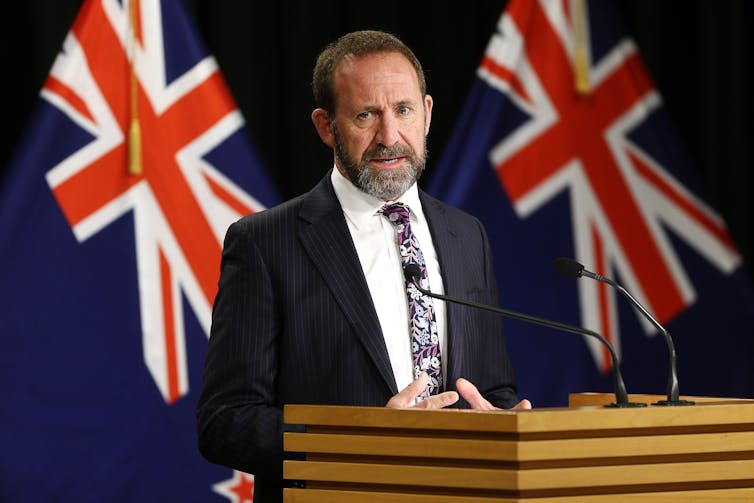
This year significant reforms to New Zealand’s health care system will be introduced. But to achieve its goals of an equitable system, the government needs to make deeper changes than it has proposed.
For two decades, New Zealand has had 20 district health boards (DHBs) planning and funding local services and owning public hospitals, and 30 primary health organisations to coordinate GP and related primary care services. These will no longer exist.
DHB functions will be absorbed within a new national body, Health NZ. GP and primary care services will be delivered through new “locality networks”. A new Māori Health Authority will work on behalf of Māori, planning and funding services, in partnership with Health NZ. A series of regional offices will facilitate the work of Health NZ and the Māori Health Authority.

The reforms are significant and underpinned by important goals: to bring equity and national consistency into the health system, between people and regions, with a strong focus on improving services and outcomes for Māori and other groups. Improving patient experience through better integrating care and processes is also a key aim.
But neither of these goals will be achieved unless issues related to the underlying institutional arrangements are tackled.
Equity requires a better funding model
Let us not forget that the foundations for how healthcare is delivered today in New Zealand were created in a historic compromise between the government and medical profession over 80 years ago when the government sought to create a national health service. The compromise split primary care from hospital services and allowed development of parallel public and private hospital sectors.
Two key changes to the proposed reforms need to be made.
First, in common with the UK and others, New Zealand healthcare is tax funded. This is a simple method where government funding is allocated to the public sector to provide services, some then procured from private providers.
Tax funded systems usually feature public hospital waiting lists and service restrictions, along with considerable government responsibility for planning and providing services. With longstanding under-investment in healthcare services, the UK and New Zealand governments are both being criticised at present for failing to adequately plan for an event such as COVID-19.
New Zealand’s historic compromise allowed for public hospital doctors to also build a private practice. New Zealanders with private insurance or deep pockets routinely pay to see them, rather than wait for public treatment (some only work publicly; some only private; many work in both sectors). Many conditions will never be treated publicly.
This means considerable suffering and disadvantage, disproportionately falling on Māori, Pacifika and the less well off, which the government hopes to address with its reforms. This will not be possible without massive funding and infrastructure investment and a shift in workforce towards the public sector.

That said, reducing private practice in favour of public is politically untenable; it would require regulation, financial and other incentives. Private specialists do extremely well, leveraging off their public sector roles and training, with back up from the public system and the Accident Compensation Corporation (ACC).
Instead, a new funding method is needed.
It is time for a national debate around shifting from tax funding to social insurance. This is found in Germany as well as Japan, South Korea, Taiwan and elsewhere. Like ACC, social insurance is agnostic about who provides care and simply funds patients based on need.
Read more: ACC’s policy of not covering birth injuries is one more sign the system is overdue for reform
If introduced in New Zealand, the private sector could continue to function as it does, alongside public hospitals, but all patients would receive the same access to care regardless of ability to pay.
A fundamental element of social insurance is delivering on equity. Social insurance is funded by payroll and employer contributions with a corresponding drop in taxes. There is no perfect health funding model. Tax funding will not solve our equity challenges, given our institutional structures. Unless the government is prepared to nationalise service provision, social insurance offers an important alternative.
Divided funding will undermine the system
The second necessary change is in the allocation of funding to primary and hospital care. From mid-year, the split between these two sectors will be exacerbated as the two will be funded quite separately, undermining efforts at whole system integration.
Locality networks will presumably be funded where they can show a range of primary care providers are working collaboratively to manage a population. Hospitals will continue to be funded by Health NZ, in partnership with the Māori Health Authority, rather than the DHBs.
Read more: New authority could transform Māori health, but only if it's a leader, not a partner
A bold government would combine and place the two funding lines between primary care and hospitals, requiring a collaborative approach to service delivery. This would take away boundaries between primary and hospital care and instead place the focus on how the different providers work to build a system.
The Labour-led government is taking important steps to address challenges in New Zealand’s health system. Goals of equity, service integration and responding to Te Tiriti o Waitangi are laudable.
But it will be a struggle to deliver on these goals without the two key changes outlined above. These would be significant and challenging. Without them, we can predict another round of reforms in future to address the same problems the current efforts will fail on.
Robin Gauld receives funding from the Health Research Council of New Zealand.
This article was originally published on The Conversation. Read the original article.







